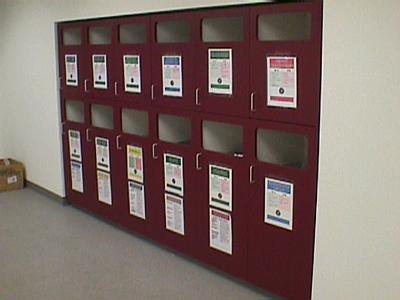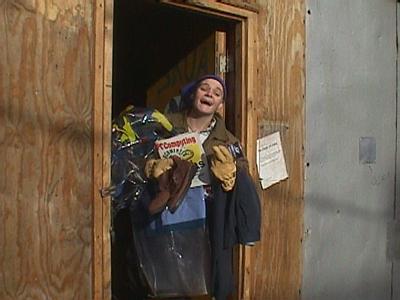
|
|
28 October, 1999
This is the first part of a two part series on trash. That sounds like a
joke but they take trash very seriously in McMurdo. Their waste management
plan is quite involved and strictly enforced. One of the first things we had
to do when we arrived in Antarctica was to attend a waste management
meeting. At this meeting, the waste recycling plan was explained. It is a
plan that can only work effectively if everyone follows it diligently. All
the solid waste generated in Antarctica by the United States Antarctic
Program (USAP) is collected, packaged and return by ship each year to a
contractor in western Washington state. There the waste is largely recycled.
Some is burned for energy and some is landfilled. However, 70% of the waste
generated is recycled. This compares to the average in the United States of
about 20%. The main reason they have achieved such a high rate is because
they require all people to sort their trash into specific categories. At
home or at school you probably sort some of your trash. You probably
separate paper, metal, glass, plastic, aluminum cans and the rest is just
garbage. In Antarctica they separate their waste into 24 waste categories.
11 of these categories are recyclable. These include aluminum, light metal,
cardboard, glass, plastic, clothing, newspapers, heavy metals, copper wire,
white paper and cooking oil. In each of the dorms and other public buildings
there are bins for each of these categories. (See picture) There are also
waste categories for construction waste, old product containers and urine
and other wastewater. Many forms of waste can be turned into energy. Waste
wood is turned into wood chips and shipped back to the U.S. for use in
generators. Other construction waste, if it cannot be reused, is compacted
and stored in large shipping containers until a ship takes them back in
February. Hazardous waste that is generated at the station is all labeled,
wrapped and shipped back. In Antarctica aerosol cans, batteries, fluorescent
light bulbs, and waste personal hygiene products are all considered
hazardous waste and are carefully packaged and keep track of. Obviously,
many of the science labs in Crary produce some hazardous wastes. All of
this, as well, is packaged and labeled. All science projects must develop
and maintain a hazardous waste disposal plan.
Even the deep field camps have to return all their waste, including
human wastes, to McMurdo in proper containers for processing. The desired
result of all of this effort is to be able to have people work in Antarctica
with a minimum impact. It was not always this way. I have talked to veterans
of the Antarctic program who remember when all the waste was thrown in open
garbage dumps. The USAP made a commitment to clean up the mess and develop a
plan to prevent it from happening in the future. They have made great
progress.
One of the real creative ways that McMurdo residents reduce the
waste they produce is by "skuaing' stuff. To "skua" something is to leave it
for someone else to use. The term skua refers to a large gull-like scavenger
bird of the Antarctic. Rather then throw out an old chair, shirt or
magazine, it ends up in "SkuaCentral" where people can find things they
might need. (See picture) Because McMurdo has such a transient population
and shipping things in and out is quite expensive, this is an excellent way
to find useful items. In fact, I think I'm running a little low on shampoo.
I might wander over to SkuaCentral and see what I can find. Tomorrow I'll
tell you about the morning I spent with the crew at "Waste World" sorting
trash. We even had a nice lunch! Don't miss it.

A typical set of waste bins found all around Mactown.

Here is Danielle, one of the McMurdo Solid Waste crew, coming out of "SkuaCentral" with her prizes saved from the trash.
Contact the TEA in the field at
.
If you cannot connect through your browser, copy the
TEA's e-mail address in the "To:" line of
your favorite e-mail package.
|
